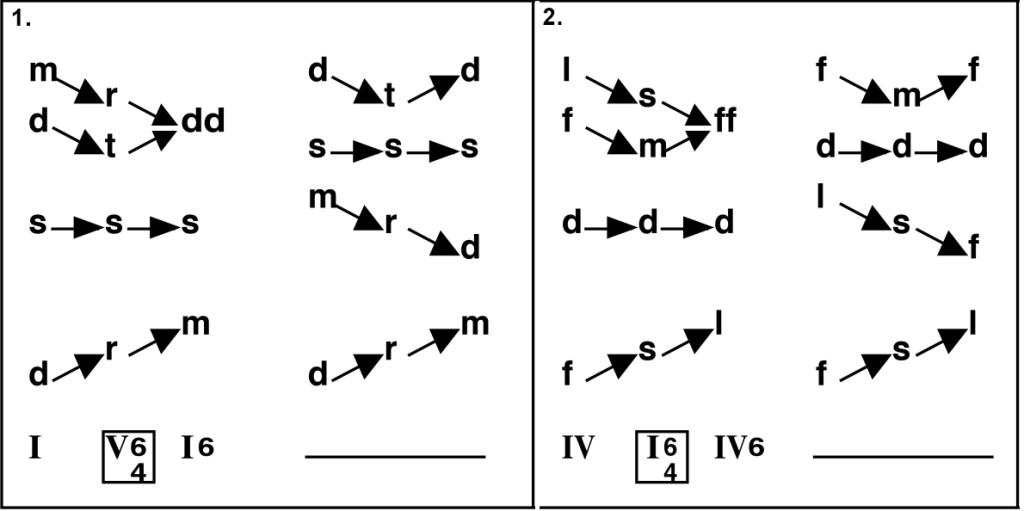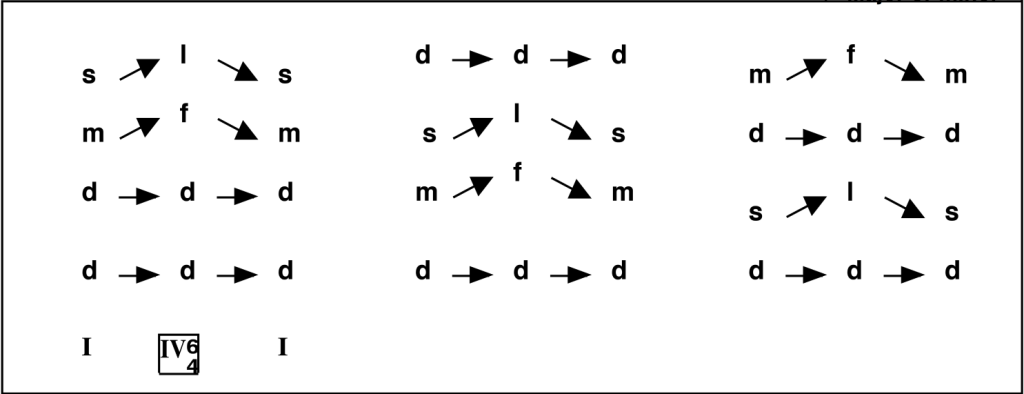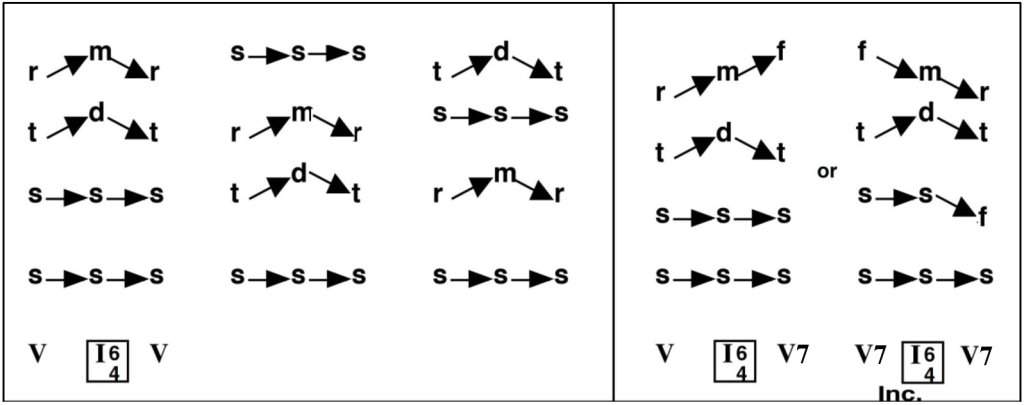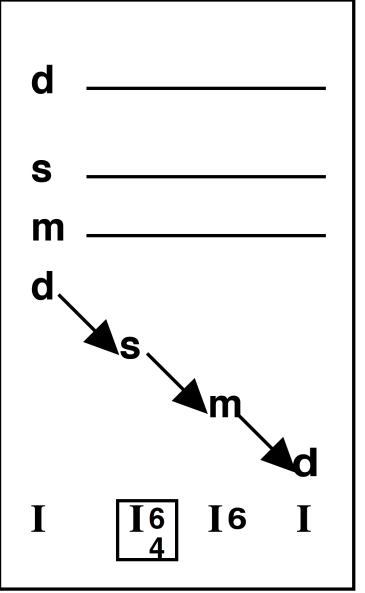10 Linear Six-Four Chords
The linear six-four chords are [I ![]() ], [IV
], [IV![]() ], and [V
], and [V![]() ].
].
Linear six-four chords are second inversion triads with the 5th of the chord in the bass. The bass is always doubled. The brackets indicate that these chords have a dependent, embellishing function as neighbor tones, passing tones, or arpeggiated prolongations.
Voice leading
A. Neighboring Six-Four Chords: [IV![]() ] and [I
] and [I ![]() ]
]
1. [IV![]() ] has do in the bass, which is doubled, and functions as a neighbor chord to I. The chord is created through the occurrence of two simultaneous neighbor tones (s – l – s and m – f – m) with the doubled 5ths remaining stationary. If the chord occurs at a cadence, it functions as a plagal cadence (see the chapter on Cadences).
] has do in the bass, which is doubled, and functions as a neighbor chord to I. The chord is created through the occurrence of two simultaneous neighbor tones (s – l – s and m – f – m) with the doubled 5ths remaining stationary. If the chord occurs at a cadence, it functions as a plagal cadence (see the chapter on Cadences).
2. The cadential [I ![]() ] has so in the bass, which is doubled. It functions as a neighbor chord between V – V or V – V7 Inc.
] has so in the bass, which is doubled. It functions as a neighbor chord between V – V or V – V7 Inc.
B. Passing Six-Four Chords: [V![]() ] and [I
] and [I ![]() ]
]
1. [V![]() ] has re in the bass, which is doubled. It functions as a passing chord between I and I6, producing a voice exchange (d – r – m or m – r – d) between the bass and one of the upper voices: I – [V
] has re in the bass, which is doubled. It functions as a passing chord between I and I6, producing a voice exchange (d – r – m or m – r – d) between the bass and one of the upper voices: I – [V![]() ] – I6 or I6 – [V
] – I6 or I6 – [V![]() ] – I.
] – I.
2. [I ![]() ] has so in the bass, which is doubled. It functions as a passing chord between IV and IV6, producing a voice exchange (f – s – l or l – s – f) between the bass and one of the upper voices: IV – [I
] has so in the bass, which is doubled. It functions as a passing chord between IV and IV6, producing a voice exchange (f – s – l or l – s – f) between the bass and one of the upper voices: IV – [I ![]() ] – IV6 or IV6 – [I
] – IV6 or IV6 – [I ![]() ] – IV.
] – IV.

All the above keyboard voicing examples can be converted into open spacing.
C. The Arpeggiated Six-Four Chord
Each of the primary triads can be prolonged by an arpeggiated bass figuration that alternates root position, first inversion, and second inversion triads.
Practice


